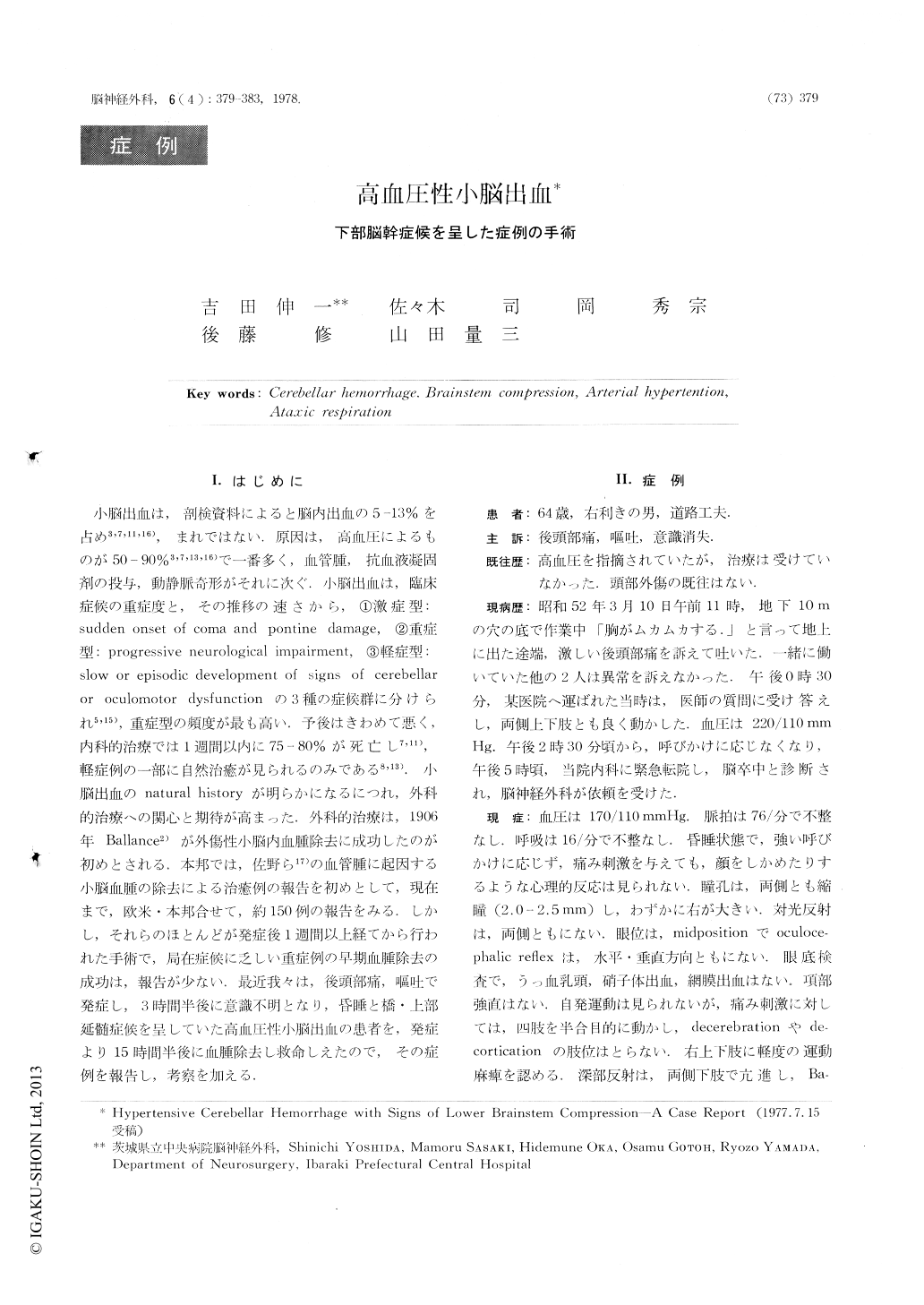Japanese
English
- 有料閲覧
- Abstract 文献概要
- 1ページ目 Look Inside
Ⅰ.はじめに
小脳出血は,剖検資料によると脳内出血の5-13%を占め3,7,11,16),まれではない.原因は,高血圧によるものが50-90%3,7,13,16)で一番多く,血管腫,抗血液凝固剤の投与,動静脈奇形がそれに次ぐ.小脳出血は,臨床症候の重症度と,その推移の速さから,①激症型:sudden onset of coma and pontine damage,②重症型:progressive neurological impairment,③軽症型:slow or episodic development of signs of cerebellar or oculomotor dysfunctionの3種の症候群に分けられ5,15),重症型の頻度が最も高い.予後はきわめて悪く,内科的治療では1週間以内に75-80%が死亡し7,11),軽症例の一部に自然治癒が見られるのみである8,13).小脳出血のnatural historyが明らかになるにつれ,外科的治療への関心と期待が高まった.外科的治療は,1906年Ballance2)が外傷性小脳内血腫除去に成功したのが初めとされる.本邦では,佐野ら17)の血管腫に起因する小脳血腫の除去による治癒例の報告を初めとして,現在まで,欧米・本邦合せて,約150例の報告をみる.しかし,それらのほとんどが発症後1週間以上経てから行われた手術で,局在症候に乏しい重症例の早期血腫除去の成功は,報告が少ない.
Successful surgical treatment of acute hypertensive cerebellar hemorrhage is described in a patient who was already in coma and presented signs of lower brainstem compression on admission.
This 64-year-old, right-handed man complained of sudden onset of severe occipital headache and then vomited. Untreated arterial hypertension was revealed in his past history. Three and a half hours later he became unresponsive to calling. On arrival at our hospital his blood pressure was 170/110, and the respiration was unremakable. He was comatose, the eyes were in midposition, and the pupils were miotic and fixed to light.

Copyright © 1978, Igaku-Shoin Ltd. All rights reserved.


